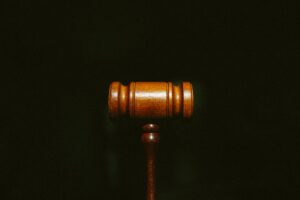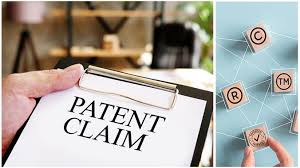
Whether you’re a plaintiff or defendant, you’re not going to get left behind if you stay on top of the trends in patent prosecution. There’s a lot to know about the PTAB, the AIA anti-joinder rules, the standing requirements for patent infringement actions, and other issues that affect the way a lawsuit is filed.
Patent eligibility
Those in the know claim that the US Supreme Court’s “dramatic” experiment in patent eligibility standards has negatively affected the life sciences. Some believe that the loss of investment in life science innovation may have stymied the development of medicines. While it is certainly not a scientifically proven fact, it is a rumor that a large proportion of the development of diagnostics has been put on hold.
The Supreme Court’s decision in Alice Corp v. CLS Bank International, which involves an abstract idea, may be the best known example of the Supreme Court’s “dramatic” experiment. The Supreme Court decided to set up a two-part test to determine whether a patent application is eligible.

Image Credit: Unsplash
There are other examples of the Supreme Court’s “dramatic” experiments in subject matter eligibility, and these are less well-known. But they have been worth considering.
One is the Deferred Subject Matter Eligibility Response (DSMER) pilot program, which delays the evaluation of patentability criteria until after other criteria have been met. Another is the USPTO’s Patent Trial and Appeal Board (PTAB). During inter partes reviews, a party may challenge the PTAB’s decision.
A recent study found that nearly all alleged infringers believe their asserted patents are eligible for patenting. However, a large proportion of the legal community believes that there is no definitive way to determine patent eligibility.
PTAB Filings
Whether you’re a patent holder or an inventor, trends in patent prosecution don’t get left behind. These changes and recent developments make it important to be aware of what you can do to prepare for the prosecution of your patents.
For example, if you’re facing a lawsuit over SEP infringement, you need to be prepared for damages and injunctive relief. During the first half of 2022, 60% of AIA review petitions were accompanied by parallel district court litigation. Similarly, in the second quarter of 2022, 331 reexam requests were filed.
These parallel proceedings can have an effect on the PTAB’s institution rate. During the second quarter of 2022, the institution rate was 71%. This is a significant decrease from the 62% institution rate in the second quarter of 2021. This trend is likely to continue in 2022.
In addition, the USPTO announced a new interim process for reviewing PTAB decisions. This process is modeled after the Federal Circuit’s ten-day circulation process. This new procedure is designed to prevent political influence on the PTAB and insulate the Administrative Patent Judges from political pressure.
The USPTO has also outlined issues that could trigger a director review request. These include: IPRs that would be a “false and misleading” claim, as well as a “deceptive” patent owner’s conduct.
Several senators have pointed out problems with the PTAB’s IPR process. In particular, the NHK-Fintiv rule has been an issue. The rule allows the PTAB to consider the status of parallel district court litigation when denying a petition. However, the PTAB retains the discretion to deny a petition for reasons other than merits.
Judge Albright’s efforts to attract patent plaintiffs
During Judge Albright‘s tenure in the Western District of Texas, the courtroom grew into a national epicenter for patent litigation. Over the past three years, Judge Albright has heard more patent cases than the next two district judges combined. He has also taken measures to streamline discovery and get cases to trial quickly. He has worked to attract patent plaintiffs and other stakeholders to his courtroom.
Judge Albright has also been involved in a variety of patent related activities, including advising lawyers, giving presentations and media appearances. He has consulted with patent attorneys at a wide range of firms.
When he was nominated for his federal bench, he was a former patent litigator. As such he has had extensive experience in the field, and has been known for achieving quick trials.
In his first three years on the bench, Judge Albright denied a large number of Section 101 motions. This was due in part to Judge Albright’s aversion to staying cases pending validity challenges. However, this was rectified after the Federal Circuit reviewed Judge Albright’s decisions.
In addition to his extensive background as a patent litigator, Judge Albright has been a proponent of attracting patent plaintiffs to his courtroom. He has been on tour, telling companies that they should file infringement actions in his courtroom. He has also been recruiting patent lawyers and giving advice to attorneys in the patent industry.
AIA’s anti-joinder rules
Congressional intent for the America Invents Act’s (AIA) anti-joinder rules was to reduce litigation and give patent victims a fair day in court. However, recent developments suggest that the heightened joinder standard is not the panacea it was intended to be.
The joinder statute changed the way plaintiffs could join multiple defendants in a single action. Before the AIA, most patent infringement cases were filed under Rule 20 of the Federal Rules of Civil Procedure. In contrast, the joinder requirement is now codified in Section 299 of the AIA.
The new joinder requirement is not only more onerous, but it also increases the initial costs of patent prosecution. As a result, patentees may find it more difficult to maintain multidefendant patent suits.
The joinder statute also makes it more difficult for a plaintiff to avoid pre-trial consolidation. This means that a plaintiff must file multiple lawsuits against multiple defendants in order to consolidate a single action.
This is not to say that joinder is impossible. In fact, the Federal Circuit recently addressed a joinder standard that was in place before the AIA. The court explained that joinder is more than a simple assertion of a common patent.
The joinder statute also provides for a severance remedy in certain situations. Specifically, the district court may refuse to sever when a party can show that joinder is improper. The Federal Circuit held that mandamus is available for this purpose.

PTAB trials vs patent-defendant case tuples
PTAB trials vs patent-defendant case tuples in patent prosecution are both tasked with determining the validity of a patent. However, PTAB trials are more limited in scope than a patent-defendant case.
In a PTAB trial, one party, the petitioner, presents a case for invalidity. He or she must prove by a preponderance of the evidence that the patent is invalid. The burden of proof is lower than in district court. It is not possible to argue that the limitations of the proposed claims were not taught by prior art.
PTAB trials are generally completed within 12 months after institution. A Scheduling Order is issued by the PTAB, setting the due dates for various stages of the case. This Order sets the tentative date for an oral hearing, the timing of a reply and the patent owner’s sur-reply.
In contrast to a patent-defendant case, PTAB trials are largely conducted before a panel of three administrative patent judges. The parties must request an oral hearing and present their case to the panel.
Although a patent-defendant case can involve more issues than a PTAB trial, it is less expensive and often takes less time to resolve. It also gives defendants the opportunity to request a stay of the patent litigation pending the final determination of the PTAB.
The standard for determining invalidity in district court is clear and convincing. It requires a patentee to prove that a claim is invalid because it is “invalid under the patent laws.” It also requires the patentee to demonstrate that it has established “general patentability” over the prior art. Aside from the courtroom worthy adversary, plaintiffs have the option of filing suit in the federal courts. A jury may or may not award a verdict in your favor. For the seasoned litigant, the courts are like a second home. In fact, the courtroom has its own patent office, albeit not in the usual suspects’ best interests. In the enclaves, one might find themselves courting a horde of patent-hungry, high-rolling clients. In short, it’s no wonder the judges are astute in the know.

